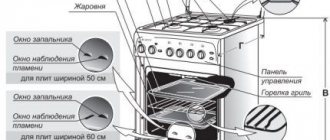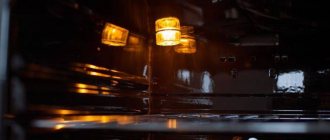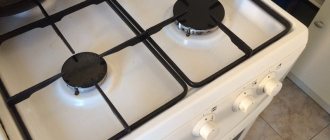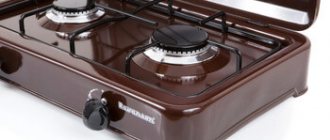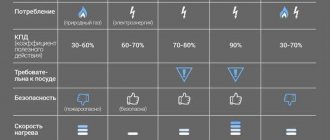Birth
Unfortunately, the exact origin of Hephaestus is unknown.
Most legends say that he was the son of Zeus and Hera. However, there are other legends that say that Hera gave birth to Hephaestus without male participation in revenge on Zeus, who gave birth to Athena in a similar way. Cretan legends have also reached us, according to which the father of Hephaestus is Talos, the Cretan sun god. Hence the legend about the connection between Hera and Helios. Before we continue, there is one feature you should know about. Talos in ancient Greek sounds like Τάλως, and Zeus had the nickname Ταλλαϊος. As you can see, their pronunciation is almost the same. And Hera was the goddess of marital fidelity, so most likely, the father of Hephaestus is really either Zeus, or Hera gave birth to him without male participation in principle.
As we all know, Hephaestus was born a frail, ugly, weak and exhausted child. When they showed it to his mother, she was horrified. It is likely that she did not want to disgrace either herself or Zeus with such a son and ordered him to be thrown off Olympus. However, luck was with the baby Hephaestus. He fell not to the ground, but to the water, into the depths of the sea. There he was noticed by Eurynome and Thetis, who became the named mothers of Hephaestus (which they never regretted later).
Anton
Ask a Question
Question to the expert
Why was Hephaestus lame?
According to one legend, he was originally born with legs of different sizes. According to another version, he injured his legs when falling from Olympus, which left him lame for the rest of his life.
However, there is another version that explains Hephaestus’ lameness. Many legends said that Zeus and Hera often fought because of the adultery of the first, and because of the jealousy of the second. One of these legends says that little Hephaestus once dared to intervene in a quarrel between his father and mother, for which an angry Zeus threw him off Olympus. According to this legend, Hephaestus hit the ground hard, which left him lame forever.
Be that as it may, Hephaestus remained for a long time in the underwater grotto with Eurynome and Thetis, who raised him as their own son and tried to help the boy develop his talents, and in general, support him in every possible way.
Childhood and adolescence
Many years passed like this. It must be said that from a young age Hephaestus proved himself to be a skilled blacksmith, craftsman and jeweler. He remained lame and ugly, but his creations were truly gorgeous. Not a single master in the world was able to create a work that could compare with the creations of the lame blacksmith. But the most beautiful things were received by Hephaestus’s mentors, who raised him. Their jewelry was so beautiful that even the Olympians had nothing similar.
As the years passed, Hephaestus grew into a strong and well-built young man. Hephaestus himself had long come to terms with the fact that he was ugly and lame, but this did not bother the young god at all. The blacksmith was only interested in one thing - his work. He spent days, weeks, months and years in his workshop, from where many beautiful things came into being. Below we will give you a complete list of his creations, but for now we will tell you about his revenge.
Hephaestus and the magic throne
No matter how much Hephaestus loved his teachers, he wanted to know who his real parents were and why he didn’t know them. Thetis and Eurynome, who loved Hephaestus as their own son, told him the secret of his birth.
Upon learning that his mother threw him from Olympus only because of his appearance, Hephaestus became furious. He locked himself in his studio for a long time and continued to work on a work that had no equal before. As a result, he forged a chair resembling a throne. Its peculiarity was that the throne was forged from pure gold. And this throne was so beautiful that only one woman in the world was worthy of it - the great Hera.
With such speeches, Hephaestus sent a gift to his real mother. The Olympians' admiration knew no bounds. Each of them admired the skillful work, but the right to be the first to sit on such a wonderful throne belonged to Hera, which she did with great pleasure.
Initially, Hephaestus was known as the god of uncontrollable fire, which he managed to tame. But the further he went, the more his appearance changed from fiery to hard-working, until he finally began to use his fire to create his works.
And then the most unexpected thing happened. The fact is that Hephaestus enchanted his throne so much that Hera was instantly entangled in invisible chains. So she remained chained to the throne for a long time. Even the almighty Zeus turned out to be powerless against the skill of Hephaestus. The other Olympian gods could not help Hera; none of them could open the invisible bonds of the chair.
There was nothing to be done, Zeus was forced to send Hermes to bring the creator of this throne, so that Hephaestus would personally release Hera from captivity and end her torment. Hermes, as always in such cases, went to carry out the order of the supreme god. But despite all his cunning, cunning, charm and cunning, he was never able to persuade Hephaestus to free Hera. The latter’s resentment towards his mother, who abandoned him, was too strong.
So Hermes returned with nothing. After this, the gods sent Ares to force Hephaestus to come. However, the god of war was unable to force the blacksmith to leave his home. Then Zeus decided to lure Hephaestus to Olympus by cunning. He sent the god of wine, Dionysus, to him. Cheerful, cheerful and carefree, Dionysus took all his cheerful brethren along with him on the mission. No offense could resist such a temptation. Dionysus got Hephaestus drunk, so much so that Hephaestus not only went with him to Olympus, but almost immediately freed Hera, who, under the influence of wine fumes, forgave her for her actions, and even apologized to her for the throne.
Recommended by topic
Loki Aphrodite Hades
After this incident, Hera, along with all the other Olympian gods, recognized Hephaestus, his divine origin and power. Moreover, he was immediately offered to stay on Olympus, and Zeus was so impressed by the talent of his young son that he immediately invited him to stay on Olympus and allocated him a luxurious palace.
It is not known what Olympus was like before the arrival of Hephaestus, but legends have reached us, according to which Hephaestus rebuilt, improved and decorated the dwellings of the gods, which became entirely gold, silver and bronze. In addition, most of the divine artifacts, thanks to which they later became famous, were forged by Hephaestus.
Subsequently, Zeus instructed his son to forge his famous lightning, and for this he promised to give him everything he wanted. Hephaestus asked Athena to be his wife, but this story is so interesting that we will put it in a separate section of the article.
In addition, Hephaestus initially remodeled his own palace so much that it began to resemble a huge forge blazing with fire. One of the beliefs says that she was inside the volcano and used its power. Hephaestus was in full swing, and his gifts and generosity knew no bounds.
Hera, realizing her mistake, tried in every possible way to appease and improve relations with her son. So, it was thanks to her advice that Zeus gave Aphrodite as his wife to Hephaestus, almost without hesitation, because before that he had long puzzled over who to give such a beautiful goddess as his wife. And even though the marriage was unhappy, Hephaestus sincerely loved Aphrodite and enjoyed her company. And it is not surprising, because the beauty of the goddess completely compensated for the shortcomings of the blacksmith himself.
Hephaestus preferred not to interfere in the lives of people, and the gods too. Only blacksmith work really interested him. However, he was friendly with many gods and gave most of them luxurious gifts.
Legend has it that one of Hephaestus's best friends was Prometheus. It was from his forge that the latter took sparks of fire, which he shared with people, for which he was severely punished by Zeus later.
Hephaestus's workshop is something. They say that all her machines obeyed only the mental commands of Hephaestus. However, the blacksmith himself very often worked with his own hands. Therefore, unlike other Olympians, he was often depicted as dirty, sweaty and tired, often wearing blacksmith clothes.
As for the popularity of Hephaestus among the gods, then, perhaps, he was popular, and even in demand. His skill compensated for all his shortcomings, which were constantly joked and mocked.
Meaning in mythology
Despite the fact that Hephaestus was lame, the Greeks revered him very much. After all, it was he who taught people the skill. Let's find out Hephaestus is the god of what in Greek mythology. He has always been considered the patron of crafts. Everything that concerns metal belongs to the zone of influence of this god.
Hephaestus is the patron saint of creative people. He helps artists who work with fire sources. He also patronizes jewelers who use fire to melt precious metals. Blacksmiths can create interesting things. As a result of forging, magnificent patterns and exquisite decor are obtained.
Hephaestus, unlike other gods, is not afraid to work. In addition, he is capable of inventing incredible things. Not only ordinary people, but also celestials ask the blacksmith god to create something special. Nobody's requests were refused. He is responsible for the creation of the aegis and scepter for Zeus. Hephaestus created a special shield for Hercules. He also made military armor for Achilles and a trident for the god Poseidon.
The Greeks treated Hephaestus with great respect. Famous masters depicted him with a hammer in his hands and wearing an apron at work. All artisans bestowed special veneration on him.
Appearance of Hephaestus. His attributes and gifts
In almost all canvases, statues and frescoes, as well as in all legends and legends (both Roman and Greek), Hephaestus is depicted as an adult man, broad-shouldered, muscular and strong, of a dense and even strong physique. But the blacksmith god was not distinguished by his beauty. For example, he was depicted with bow legs, and legends say that one of his legs was shorter than the other, which is why he limped badly.
His face was also not distinguished by beauty. Some similarities with Zeus are noticeable, but these are only general features. Hephaestus himself had, although not elegant, features, they were quite tolerable. It is known that he had a small beard that completely merged with his hair.
Hephaestus, like all other gods, had his own attributes that clearly emphasized his inclinations. For example, his attributes were an anvil and blacksmith tools, in particular, pliers and a hammer.
But as for the gifts that the legendary blacksmith god forged, there were a lot of them, so we will tell you a little about each of them:
- The lightning of Zeus, which became the symbol of the god and which decided the outcome of the Titanomachy.
- Aegis is a legendary goatskin cape given to Zeus. She was believed to have strong protective charms.
- The scepter of Zeus is a symbol of his supreme power.
- Thyrsus is the staff of Dionysus, the god of wine.
- The Chariot of Helios is also a work of Hephaestus.
- Magic golden arrows of Apollo.
- Hermes received the Caduceus from Hephaestus.
- Achilles' armor was also made by Hephaestus, at the request of Thetis.
- The armor of Hercules was also forged by Hephaestus.
- The Shield of Athena is also the creation of the blacksmith Hephaestus.
- He forged two assistants for himself from pure gold.
- War chariot for Zeus, on which he fought in the Titanomachy and Gigantomachy.
- Bow and arrows of Artemis.
The great Hephaestus was famous for many other gifts, thanks to which he was greatly revered by mortals. And the gods actually admired his skill and love for his craft. But the famous Hephaestus became famous not only for this.
Symbols of Hephaestus
The main element of God is fire. This phenomenon can cause not only respect, but also great fear. After all, fire not only creates, but can also cause big problems.
Fire is capable of melting metal and giving the material any configuration for utensils or weapons. In Greece, fire was perceived as a symbol of purification. After all, the elements can kill, but also bring you back to life.
The nature of the flame is symbolized by the Olympian god Hephaestus. After all, he knows what it is to be reborn from the ashes. In this case, lameness acts as belonging to a dangerous element.
Every god has his own attributes. Certain objects represent the personification of personal qualities and powers. The following symbolic elements should be highlighted:
- The symbol of Hephaestus is the blacksmith's tools and the anvil. These items demonstrate the essence of divine powers.
- In many works of art, Hephaestus is depicted as a powerful man with huge hammer hands. In some cases, he has a special cap on his head, which was worn by artisans.
- Hephaestus also wears a shortened tunic. This is precisely the thing that is relevant for the workers of the ancient world.
Recommended by topic
How myths are born in mythology Mjolnir Vanaheim
Now we have finally come to the moment what reward Hephaestus demanded from Zeus. It must be said that his requests were really serious, for he asked Zeus to give him the love of Athena, who swore to remain a virgin.
So Hephaestus, almost for the first time in history, managed to take the Thunderer by surprise. On the one hand, there is his beloved daughter and adviser Athena, whose whims he always indulged. On the other hand, a promise to Hephaestus, who could easily stop forging lightning for him, which Zeus also could not allow.
According to other sources, this story occurred either after the breakup with Aphrodite, or during their married life.
There was no choice, he told Hephaestus that he would not oppose his union with Athena, and told his daughter that he did not insist on her relationship with Hephaestus, and if she wanted, she could not have a relationship with him. Whatever it was, Hephaestus did not forget his feelings for Athena.
During the Trojan War, Athena turned to Hephaestus to forge her some powerful weapons and armor. At the same time, Hephaestus did not demand any reward from the goddess, saying that her love would be enough. Athena was touched by such words. However, Hephaestus was not the only one who longed to possess Athena. Poseidon was also in love with her, to which he received refusals from the proud goddess.
And then one day he persuaded Hephaestus that Athena agreed to respond to his feelings. And this was precisely in those days when Athena was supposed to take away weapons and armor. Hephaestus, remembering Poseidon's words, tried to take Athena by force. But the latter managed to push Hephaestus away and run out of his workshop.
The thirst for possession of a virgin beauty overshadowed the mind of Hephaestus. He ran after her, caught up and grabbed her tunic, tearing it off completely and exposing her beautiful body. Naked Athena so amazed the blacksmith that he instantly “splashed out his love on Athena’s thigh,” so to speak. Athena, disgusted, wiped herself with her tunic and then threw it to the ground.
However, it so happened that the seed of Hephaestus fertilized Gaia, the goddess of the earth, onto whom a piece of cloth fell. Subsequently, Gaia gave birth to Erichthonius, the first ruler of Athens. Gaia abandoned him, and then Athena herself raised him.
Hephaestus and wives
We all know that the flighty and freedom-loving Aphrodite was the only one who opposed the wedding with Hephaestus. However, marriage did not discourage the goddess of love from lust. It is known that she cheated on her husband many times with other gods, and even gave birth to children for them.
However, Hephaestus loved her very much, which is why he forgave her a lot. However, his patience came to an end when Helios saw Aphrodite in the arms of Ares, which he immediately reported to Hephaestus.
As we know, Hephaestus was a master at all kinds of traps and tricks. And in this case, he decided to personally verify his wife’s infidelity. He managed to forge a network with such small cells that it was simply not visible, and so strong that no one living at that time could break it.
He laid this net on his marital bed, and he told Aphrodite that he was going on a hike. Of course, the lustful goddess immediately decided to take advantage of the moment and called one of her frequent lovers, Ares. It was here that the doves were caught in Hephaestus’s net. He returned and saw Ares and Aphrodite naked. To teach them a lesson, Hephaestus summoned all the gods of Olympus in order to finally disgrace the lovers.
History is silent about what happened next. According to one version, Zeus punished the disgraced lovers and drove them out of Olympus, according to another, they left on their own, and Zeus even accused Hephaestus of not telling the other gods about his family problems, much less showing naked Aphrodite.
Subsequently, Hephaestus married Aglaya, the youngest of the 3 Charites, who gave him 4 daughters.
Family life of Hephaestus
Getting acquainted with the legends about Hephaestus, I involuntarily become convinced that all the sorrows in his life were associated with women. When the problems with his mother were resolved, an equally bright personality appeared - his wife. Loving Aphrodite quickly became bored with her lame husband, always busy with business at the forge. Without fear for her reputation, she threw herself into the arms of the ardent Ares, the god of war. Of course, news of the betrayal very soon reached Hephaestus.
The offended god was not going to forgive his wife. For a long time he forged a thin, almost invisible, but very strong network. When the work was finished. Hephaestus left the trap by the bed, going to the forge. Upon his return, the god found Ares and Aphrodite, who were unsuccessfully trying to get out of the net.
To expose the lovers to ridicule, the blacksmith called all the gods to admire the picture that opened. To the chagrin of Hephaestus, there was no condemnation from the Olympians. In the retellings of ancient authors, Hermes cheerfully noted that he himself would not mind being in the place of Ares, and Poseidon ordered the release of Aphrodite. Despite his resentment, Hephaestus turned out to be supportive of his wife and her lover.
Legends of Hephaestus
Hephaestus became famous not only for his creations and failures in love affairs. There are several legends that reveal his character even more deeply. We are going to tell you about them now.
Second fall from Olympus
It must be said that after the story with the throne, Hera significantly changed her attitude towards Hephaestus. And the blacksmith finally forgave his mother for her terrible act. Whatever it was, he supported his mother in all her endeavors, and even often got involved in their quarrels with Zeus. But everything ended more or less peacefully, until one incident.
As we know, Hera, exhausted by her husband’s constant betrayals, was jealous of him in every possible way. At the same time, she took revenge not on Zeus himself, but also on his children from other women. For example, Zeus was severely angry with her because Hera sent a strong storm to Hercules’ ship. But she would have gotten away with everything if not for the betrayal. One day her patience became too much and she decided to overthrow her husband to Tartarus. This story ended happily for Zeus. Poseidon and Apollo, as punishment, went to build the legendary walls of Troy, and Hera was suspended on golden chains between heaven and earth.
And then Hephaestus appeared on the scene, who stopped the mother’s torment and freed her. For this, Zeus hit Hephaestus so hard that he flew off Olympus and fell into the sea, near Lemnos, where he later created his second legendary forge.
Hephaestus in legends
As a rule, Hephaestus was a peace-loving god and he participated in current events only in cases where he was asked or forced to do so. So, for example, during the Gigantomachy, Hephaestus personally killed Mimanth, one of the 150 giants, the offspring of Gaia and Tartarus. He also contributed by pelting the giants with hot stones.
Question to the expert
Why is Hephaestus called an artist?
The fact is that in both the Iliad and the Odyssey, Homer calls Hephaestus an artist, referring to the weapons, armor, chariots and other works of forge that he created, and not because Hephaestus painted pictures.
Hephaestus also chose not to interfere in the Trojan War. Yes, he created the armor of Achilles, at the request of Thetis, but he also forged armor for Memnon - one of the most famous opponents of Achilles, at the request of the goddess Eos. Only once did he intervene in the war, and even then at the request of Hera, when the river god Scamander almost drowned all the Greek heroes at once, led by Achilles.
Hephaestus, using his powerful and magical fire, tamed both the river and the god himself.
But Hephaestus was jealous of his fellow blacksmiths, whom he patronized. There is a legend that it was Hephaestus, at the request of Athena, who taught people crafts and arts, taught them to build houses, cities and villages, and also taught them to use various achievements.
The influence of Hephaestus on culture
Hephaestus was considered one of the simple gods close to people, thanks to which he was almost the only one who was loved and revered not out of fear. Only people who lived near the volcanoes Vesuvius and Etna were afraid of Hephaestus. They believed that the constant roar coming from them was because Hephaestus’s workshops were located inside them.
In Crete there are practically no mentions of Hephaestus, but in Athens, Sicily and Campania, the influence of Hephaestus was enormous. And so much so that in honor of the blacksmith they even often held sports games of running with a burning torch in their hands.
This is the kind of blacksmith god he is. An incredibly strong, intelligent, cunning, skilled craftsman and magnificent jeweler who managed to have an incredible impact on Greek history without really taking part in it. Unfortunately, this is where our article comes to an end, so we say goodbye to you. Until next time.
Naval aviation is mastering the Hephaestus system
Su-24 and Su-30SM of the Black Sea Fleet
Several years ago, the aerospace forces began widespread implementation of the SVP-24 “Hephaestus” specialized aviation computing subsystem. Soon all its advantages were demonstrated during the Syrian operation. Now naval aviation aircraft receive such equipment. This year, Black Sea pilots were the first to begin mastering the modernized equipment.
Introduction of new products
The first reports of work on the implementation of the Hephaestus subsystem in naval aviation appeared in 2021. Then there was talk of re-equipping Su-33 carrier-based fighters using SVP-24-33 equipment.
It was also noted at that time that in the near future “land” Su-24M front-line bombers would receive similar devices. At the beginning of 2021, the Chief of Naval Aviation, Major General Igor Kozhin, in an interview for Krasnaya Zvezda, said that the modernization of Su-24M and Su-33 aircraft with the help of Hephaestus had significantly increased their ability to hit ground targets. However, at that time there was no information about the re-equipment of the naval Su-24M.
The situation with the SVP-24 for naval aviation has only now become clearer. On July 13, Major General Kozhin spoke about the Navy’s plans to develop aviation groups. Among other things, he noted that the flight personnel of the Black Sea Fleet had successfully mastered the new sighting systems installed on their aircraft. At the same time, specific types of equipment, equipment or military units were not named.
On July 20, Izvestia, citing its sources in the Ministry of Defense, revealed details of the current rearmament. According to them, we are talking about modernizing Su-24M bombers using the SVP-24 subsystem. This equipment belongs to the 43rd separate naval attack Sevastopol air regiment, based in Crimea. The modernization work was completed at the beginning of the year, and at the same time the pilots began mastering the new equipment.
Not only Black Sea
Currently, the 43rd Marine Corps is the only part of naval aviation that has Su-24M aircraft with Hephaestus.
In the near future, the regiment will have to test the modernized equipment as part of major exercises. In September, Black Sea pilots will take part in the Caucasus-2020 maneuvers, and the Su-24M will not be left without work. It is reported that two more fleets are preparing to modernize the equipment - the Baltic and Northern. As part of the naval aviation of the Baltic Fleet, Su-24M aircraft serve in the 4th separate Guards Naval Attack Aviation Regiment, recreated in 2021. Together with them, the regiment operates modern Su-30SM fighters, delivered in recent years.
Bombers of the 98th Separate Guards Mixed Aviation Regiment of the 45th Air Force and Air Defense Army of the Northern Fleet will also undergo modernization. This regiment includes two squadrons flying Su-24M bombers and Su-24MR reconnaissance aircraft. Their modernization will also lead to understandable consequences.
According to the reference book The Military Balance 2021, the naval aviation of the Russian Navy serves 41 Su-24M bombers and 12 Su-24MR reconnaissance aircraft. Considering the successes achieved in the re-equipment and modernization of aerospace forces aircraft, it can be assumed that in the coming years a complete renewal of the naval Su-24M/R fleet will be completed with all the desired capabilities obtained.
"Hephaestus" over the sea
Like the Air Force / Aerospace Forces several years earlier, the Navy aviation is making the transition to modern on-board equipment, which increases the combat qualities of the equipment. While it lags behind its “land” colleagues, the situation is gradually changing for the better.
Su-24M during Northern Fleet naval aviation exercises, January 2020
According to known data, to date, a number of Su-33 carrier-based fighters have received the SVP-24 “Hephaestus” subsystem. Last year it was reported that the modernization of Tu-142M patrol aircraft had begun, which also included the installation of Hephaestus. A few months ago, the first of the updated Su-24Ms returned to service. Of all the compatible types, only the Su-25UTG has not yet received such equipment - however, the decision to begin modernization (or to abandon it) can be made at any time.
The exact number of modernized “marine” aircraft has not yet been announced. At the same time, the technical features of the SVP-24 and the capabilities of the Navy make it possible within a few years to update all available compatible aircraft in the amount of several dozen.
Marine Benefits
The specialized computing subsystem "Hephaestus" is intended to increase the effectiveness of the use of unguided air-to-surface aircraft.
Its devices receive data from a number of sensors and devices, generate data for the use of weapons and ensure release/firing at the optimal point in time. Due to this, bombs or missiles show the highest possible accuracy. SVP-24 is made in the form of a set of products for installation on an existing aircraft. No major restructuring of the equipment is required. Installation of equipment can be carried out either at a repair plant simultaneously with the restoration of equipment, or in a technical room. In the latter case, all procedures take only a few days.
When used on the Su-24M, the SVP-24 subsystem increases the accuracy of ASP application up to three times. Such capabilities have been repeatedly confirmed in test conditions, and then were tested in Syria. “Hephaestus” in practice made it possible to solve the same combat missions faster and with less consumption of weapons, and relatively cheap, unguided ones.
The tasks of naval aviation include defeating various surface or ground targets using the entire available range of anti-aircraft weapons. Thus, Su-24M bombers must use guided and unguided missiles and bombs against coastal structures, equipment, ships and watercraft. Some of these problems are effectively solved by unguided weapons, and Hephaestus increases the likelihood of defeat with minimal weapon consumption.
Su-33 fighters are also capable of attacking coastal or surface targets. In their case, SVP-24 completely justifies itself. Of greatest interest is the installation of “Hephaestus” on Tu-142M anti-submarine aircraft. The operation of such machines is also associated with the release of payloads, but in their case these are hydrobuoys, explosive sound sources and anti-submarine bombs or mines. High accuracy of dropping buoys or bombs is of great importance for the effective solution of combat missions - and the use of SVP-24 is also completely justified.
Ways of modernization
The latest news about the modernization of the Su-24M from the Black Sea Fleet and the expected upgrade of equipment of other fleets is fully consistent with the general strategy for the development of combat aviation of the Russian armed forces.
In the interests of the Aerospace Forces and the Navy, completely new aircraft of modern models are being purchased and supplied, and in parallel, existing equipment is being modernized. In terms of timing and pace of rearmament and modernization, naval aviation is still inferior to the Aerospace Forces. In particular, the introduction of Hephaestus began several years late, and so far we are talking about only one regiment. However, the necessary processes are up and running. In the foreseeable future, the naval aviation of the Navy will be armed with several types of aircraft for various purposes, but with similar capabilities for the use of air-to-surface weapons.
